Why Did Vikings Burn And Bury Their Longhouses?
Ellen Lloyd - AncientPages.com - We know that ancient civilizations burned or buried their dead. That was common practice in ancient times, and the same applies today. What might sound unusual at first is the fact that Vikings also wanted their longhouses to die, so they either burned or buried their longhouses.
Once we understand why Vikings had this unusual tradition, it becomes quite logical and easy to follow their way of thinking.
Vikings had many customs. Credit: Adobe Stock - Fotokvadrat
The Vikings had no religion but they had customs, practices, and beliefs. Ancient Viking funeral traditions and rituals were very complex. Many relics in ancient tombs reveal that the type of burial a Viking received depended on his importance in society. Based on discovered archaeological evidence it seems that the funeral boat or wagon was a practice that was reserved for the wealthy. A great Viking warrior received a ship burial. This involved placing the deceased on the ship, sail him out to sea, and set the Viking ship on fire.
Vikings Lived In Longhouses
A typical Viking home was a longhouse (langhús), that was usually 5 to 7 meters wide (16 to 23 feet). Wealthy Vikings could live in very large longhouses that could be from 15 to 75 meters long (50 to 250 feet). Inside the longhouses there were several rooms, divided by walls and sometimes a large and imposing hearth, with stones set on end in the earth, mirroring the shape of the longhouse. Ventilation and illumination was provided through smoke holes in the roof.
A Viking longhouse. Image credit: Anne Pedersen- National Museum of Denmark
Vikings were familiar with candles, but they were expensive and not often used. Instead, light was provided with simple lamps made from available material that could, for example, a dished stone, which was filled with fish liver oil for fuel or, when available, seal or whale oil.
Cremation And Burial Of A Longhouse
Marianne Hem Eriksen, a postdoc at the Department of Archaeology, Conservation, and History at the University of Oslo has studied the custom of how Vikings burned and buried their Iron Age longhouses.
According to Eriksen, burial mounds may mark the tomb of a house as that of a human. After a longhouse burned to the ground, one or more burial mounds were placed on top of its remains.
Very few could receive a Viking ship burial. Credit: Adobe Stock - Alexisaj
Architecture takes on special importance as a collective expression of the organization and mindset of a culture, and people had a special relationship to their houses.
“To people in Madagascar, a house has its own life cycle. It is born, lives, grows old, and dies. The Batammaliba people of West Africa perform rituals during the construction of houses, the same rites of passage that they perform for newborn babies, adolescents, and adults.
When the house is completed, they perform a ritual where they “kill” the house. The house has been alive during the building process and must be killed to make it habitable for people. Many cultures believe that the house is metaphorically linked to the human body, “Eriksen explained.
Inside a Viking longhouse. Credit: Adobe Stock - Sunshower Shots
It took time and hard work to construct a longhouse. The house served as a shelter, home, and sometimes a symbol of power and status.
While studying seven longhouses in Scandinavia, Eriksen discovered there is a connection between burial sites and the doors leading into the house.
Some human remains had been placed under the thresholds or of graves being placed near entrances. In other cases, burial mounds have been placed over the door to the house as if to close the entrance. It’s obvious this had a ritual significance.
Vikings Believed There Was A Link Between Their House And Body - A House Had A Soul
‘Many of the Norse words that are related to houses are derived from the human body. The word “window” comes from wind and eye and refers to openings in the walls where the wind comes in. The word “gable”, i.e. the top of the end wall of the house, means head or skull.’
Vikings saw a link between the human body and the house. This suggested that the house borrowed many features from the human body. It’s very possible that Vikings believed the house had some kind of essence, some kind of soul, and this was the reason why they wanted to give their house a proper burial.
Inside a Viking longhouse. Image credit: Ribe Viking Center
The purpose of cremation is to reduce the body to fragments, perhaps to liberate the soul or the essence, and this is interesting since the houses may have been regarded as having an essence.
So, by burning down the house they may have had a wish to cremate it, to liberate the life force of the house. If houses and people could be part of a network that had “agency” – vitality and personality – this could at least be part of the explanation for the longevity of longhouses in Scandinavia.
The idea that your house plays an important part in our lives is not far-fetched. In modern times, we still have a strong relationship to our homes, especially the house where we grew up.
According to French philosopher Gaston Bachelard, “our first house is written into us, we carry it with us through life. Although we have walked up thousands of stairs, we never forget the staircase of our first childhood home, we recognize instinctively the steps that creak, and we never stumble. We carry the house with us for life.”
Vikings were not aware of Gaston Bachelard’s thoughts, but their houses were so important to them, they deserved a proper burial.
Updated on February 10, 2024
Written by Ellen Lloyd – AncientPages.com
Copyright © AncientPages.com All rights reserved. This material may not be published, broadcast, rewritten or redistributed in whole or part without the express written permission of AncientPages.com
Expand for referencesMore From Ancient Pages
-
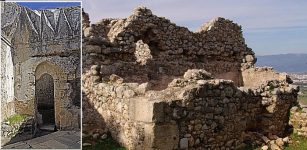 7th Century Old Cistern Among Recent Finds In Medieval City Of Beçin, Turkey
Archaeology | Aug 21, 2020
7th Century Old Cistern Among Recent Finds In Medieval City Of Beçin, Turkey
Archaeology | Aug 21, 2020 -
 Bouboulina: Heroine, Wealthy Widow And Shipowner Who Commanded A Greek Fleet Against The Ottoman Empire
Featured Stories | Aug 30, 2019
Bouboulina: Heroine, Wealthy Widow And Shipowner Who Commanded A Greek Fleet Against The Ottoman Empire
Featured Stories | Aug 30, 2019 -
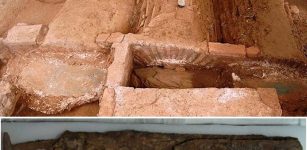 Gothic Warrior With Rare Sword Unearthed In Thessaloniki, Greece
Archaeology | Apr 23, 2021
Gothic Warrior With Rare Sword Unearthed In Thessaloniki, Greece
Archaeology | Apr 23, 2021 -
 Hermes – Divine Trickster, Psychopomp, Patron Of Merchants And Thieves In Greek Mythology
Featured Stories | Jan 15, 2019
Hermes – Divine Trickster, Psychopomp, Patron Of Merchants And Thieves In Greek Mythology
Featured Stories | Jan 15, 2019 -
 Scotland’s Mysterious Ballachulish Figure Could Be Cailleach Bheithir – Ancient Hag Goddess Of Winds And Storms
Artifacts | Nov 23, 2018
Scotland’s Mysterious Ballachulish Figure Could Be Cailleach Bheithir – Ancient Hag Goddess Of Winds And Storms
Artifacts | Nov 23, 2018 -
 10 Magnificent Ancient Libraries
Featured Stories | Feb 6, 2016
10 Magnificent Ancient Libraries
Featured Stories | Feb 6, 2016 -
 Ancient DNA And Tombstones Lead Scientists To Black Death’s Source Strain
Archaeology | Jun 15, 2022
Ancient DNA And Tombstones Lead Scientists To Black Death’s Source Strain
Archaeology | Jun 15, 2022 -
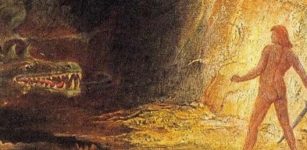 Sigurd Fafnirsbane – Legendary Dragon Slaying Warrior And His Magical Sword
Featured Stories | Oct 30, 2017
Sigurd Fafnirsbane – Legendary Dragon Slaying Warrior And His Magical Sword
Featured Stories | Oct 30, 2017 -
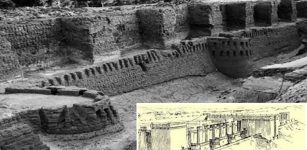 Massive Fortress Buhen In Ancient Capital Of Egyptian Nubia
Archaeology | Mar 20, 2017
Massive Fortress Buhen In Ancient Capital Of Egyptian Nubia
Archaeology | Mar 20, 2017 -
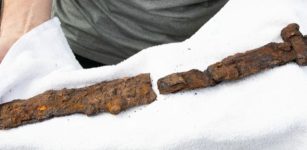 Man Finds A Viking Sword In His Garden – A Viking Grave Could Also Be Nearby – Scientists Say
Archaeology | Sep 2, 2022
Man Finds A Viking Sword In His Garden – A Viking Grave Could Also Be Nearby – Scientists Say
Archaeology | Sep 2, 2022 -
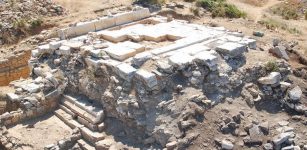 Excavations Begin In Ancient City Of Antiocheia Ad Cragnum, Turkey
Archaeology | Sep 4, 2015
Excavations Begin In Ancient City Of Antiocheia Ad Cragnum, Turkey
Archaeology | Sep 4, 2015 -
 On This Day In History: Gottfried Wilhelm von Leibniz – Famous Philosopher, Scientist And Mathematician Died – On Nov 14, 1716
News | Nov 14, 2016
On This Day In History: Gottfried Wilhelm von Leibniz – Famous Philosopher, Scientist And Mathematician Died – On Nov 14, 1716
News | Nov 14, 2016 -
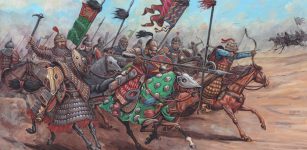 Mystery Of The Avars Who Conquered The Roman Empire Solved By Scientists
Civilizations | Apr 1, 2022
Mystery Of The Avars Who Conquered The Roman Empire Solved By Scientists
Civilizations | Apr 1, 2022 -
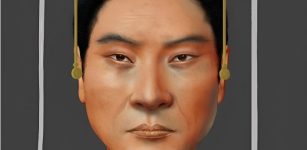 Facial Reconstruction Of Chinese Emperor Wu Who Lived 1,500 Years Ago
DNA | Mar 29, 2024
Facial Reconstruction Of Chinese Emperor Wu Who Lived 1,500 Years Ago
DNA | Mar 29, 2024 -
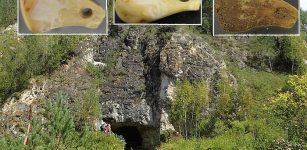 An Ancient Woman’s DNA From A 20,000-Year-Old Pendant – Recovered By Researchers
Archaeology | May 4, 2023
An Ancient Woman’s DNA From A 20,000-Year-Old Pendant – Recovered By Researchers
Archaeology | May 4, 2023 -
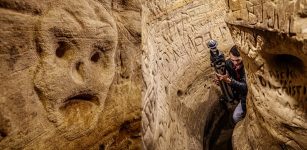 Hidden Treasures Revealed In Unique 3D Rendering Of Robber’s Cave In Nebraska
Archaeology | Dec 11, 2019
Hidden Treasures Revealed In Unique 3D Rendering Of Robber’s Cave In Nebraska
Archaeology | Dec 11, 2019 -
 Aaru – Field Of Reeds: Kingdom Of Osiris Was The Ancient Egyptian Paradise
Myths & Legends | Feb 29, 2024
Aaru – Field Of Reeds: Kingdom Of Osiris Was The Ancient Egyptian Paradise
Myths & Legends | Feb 29, 2024 -
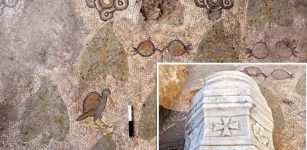 Extraordinary Ancient Mosaics, Crucifixes, And Long-Lost Church Discovered In The Holy Land
Archaeology | Dec 22, 2017
Extraordinary Ancient Mosaics, Crucifixes, And Long-Lost Church Discovered In The Holy Land
Archaeology | Dec 22, 2017 -
 Early Harappan Cultures Can Solve Mysteries Of Several Lost Cities Of Indus Valley Civilization
Artifacts | May 30, 2019
Early Harappan Cultures Can Solve Mysteries Of Several Lost Cities Of Indus Valley Civilization
Artifacts | May 30, 2019 -
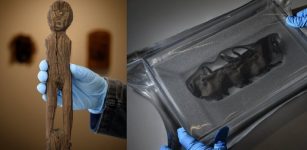 Ancient Artifacts Hidden Beneath The Ice In Danger As Glaciers Are Melting
Archaeology | Oct 19, 2020
Ancient Artifacts Hidden Beneath The Ice In Danger As Glaciers Are Melting
Archaeology | Oct 19, 2020





